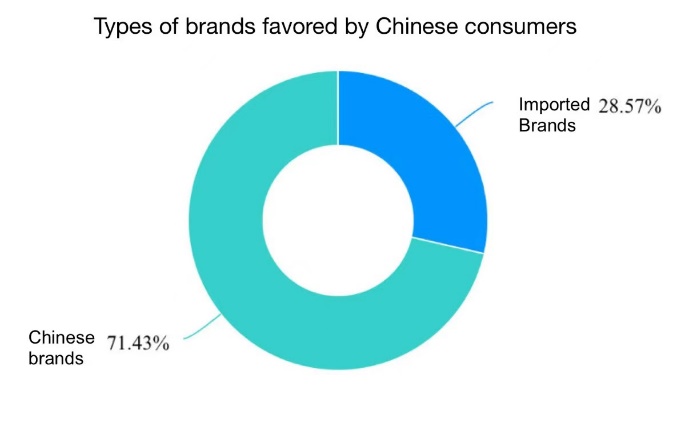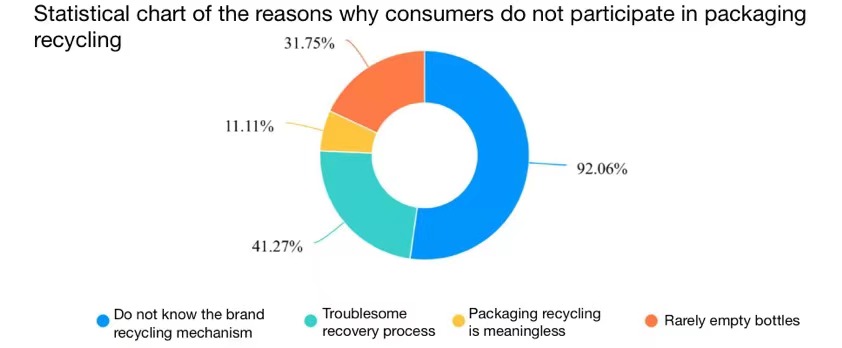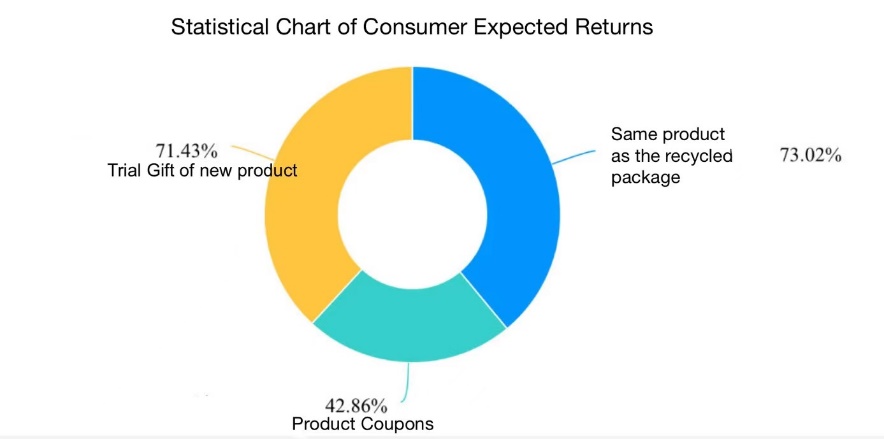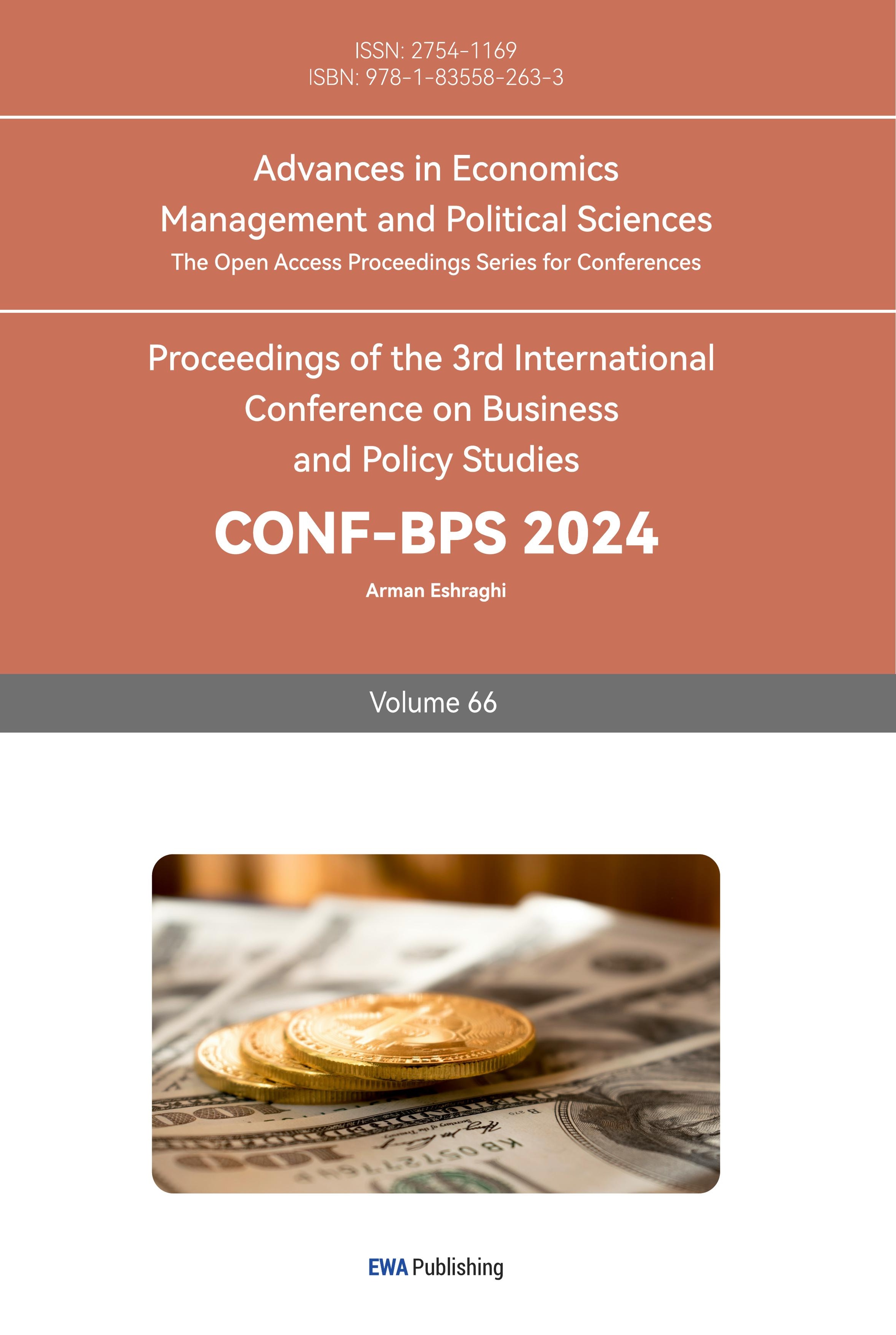1. Background
With the development of the global economy, people's demand for quality of life is getting higher and higher, and men, women and children are generally pursuing a cleaner, more beautiful high quality of life. Daily chemical products include cosmetics, daily necessities and toiletries, which are obviously essential for people to achieve a high quality of life. In the daily chemical industry, cosmetics and daily necessities occupy the first two positions in market sales, and toiletries rank third. As of 2021, China's daily chemical market sales reached 38.93 billion yuan, an increase of 0.28% compared to 30.2 billion yuan in 2020. L'Oreal Group, one of the three giants in the daily necessities industry, for example, said in its 2022 financial report that as of December 31, 2022, the group's sales were nearly 38.3 billion euros, up 18.5% year-on-year. Operating profit reached €7.5 billion, up 21% year-on-year. Compared to 2019, its sales increased by 23.4%. This shows that behind such high sales, there are countless amounts of packaging, but in fact, only a few of L'Oréal's twenty-eight daily brands have related recycling programs.
Through the study of the existing literature: experts and scholars in food packaging, courier packaging and agricultural packaging are very deep research, especially in how to deal with food delivery and courier packaging. China has introduced corresponding policies and regulations to recycle packaging to prevent pollution and to be used twice. However, the pollution of daily chemical packaging is often avoided. Among the more than 6,000 packaging recycling-related literature journals included in the database, only 0.008% are related to the recycling of domestic daily chemical products, and it is no coincidence that among the more than 12,000 green packaging literature, only 0.003% of the articles mention daily chemical products. This shows that there is a gap in China's research on the recycling of daily chemical packaging, and the recycling system of daily chemical packaging needs to be improved.
This paper intends to study how to green the supply chain of daily chemical products by enhancing the feasibility of recycling packaging, and promoting the sustainable development of enterprises. The 20th Congress of the Communist Party of China clearly pointed out that China's modernization is a modernization in which people and nature live together in harmony. In this context, the green transformation of the supply chain of daily necessities is of great significance.
2. Literature Review
Zhe Yuan pointed out in 2022 that "when making consumption decisions, a group of people will first consider their own and their family's health and environmental responsibility [1]" in his article "LOHAS — Research and practice in the daily packaging." the application of this "LOHAS" in the packaging of daily necessities opens up this good development trend, with a broad development field and market demand, this viewpoint is conducive to reminding enterprises of the importance of sustainable packaging, and provides a new design solution, but only the consideration of packaging green design, without mentioning the concept of re-cycling; Dingti Luo, Fenglian Xu in 2019 in the article "Study on packaging recycle of cosmetics from the perspective of circular economy" pointed out that cosmetic packaging recovery and recycling is the centralized embodiment of the circular economy in the packaging field and the best way to deal with cosmetic packaging at present, proving that cosmetic packaging recycling has an important economic value [2], but not considering whether the secondary use of cosmetic packaging has a high feasibility; Fenglian Xu in 2019, in article "Research on cosmetics packaging recovery in the perspective of closed-loop supply chain", emphasized that the recycling of cosmetic packaging should be one of the responsibilities of manufacturers, and designed a reverse supply chain flow chart for manufacturers under the guidance of the closed-loop supply chain concept for recyclable packaging materials, which will continue to flow into the forward supply chain after the materials are processed and used as raw materials for production [3]; Yanli Du, Lu Pei , Xiaolong Tu, Jiazhen Wang in 2018 in "Green design of protective packaging for food and daily necessities" emphasize the concept of zero-waste packaging, where the outer packaging of daily necessities (the outermost carton) is designed to be reusable in a form that can be transformed into a new and utilizable stand-alone product in addition to its most basic protective role [4]. Weifeng Xu, Shuai Yang, Mu Yuan Sun, Zhiqiang Chen in 2023 in the article "Green Packaging Product Evaluation Status and Trends" introduced the five commonly used green packaging evaluation methods, and proposed that consumers tend to choose to use sustainable packaging or even willing to pay higher prices for green packaging, although the domestic green packaging system and standards are not perfect, but with the international sustainable development trend is deeply rooted, the development of relevant regulations to green supply chain transformation is inevitable. [5]; Yuzhu Yang pointed out in his article "Research on the Penetration of Green Design Concepts in Packaging Design" in 2023 that packaging materials should be reusable, renewable and edible, and emphasized that the design of the packaging shape and structure should focus on ensuring the functionality of the goods while ensuring the simplicity as much as possible, and proposed that consumers are the most important participants in the market and should be the practitioners of the green concept. [6]; In 2023, Baoxu Fan pointed out in his article "Research on the Environmental Legal Regulation of Excessive Product Packaging in China" that improving China's packaging standard system is inseparable from promoting cleaner production, incentivizing recycling systems, accelerating the resourceful treatment of packaging waste, and strengthening the management of product packaging processes [7].
3. Methodology
3.1. Literature Analysis Method
Through finding and reading a large number of domestic and foreign literature, we comb through the current situation of packaging recycling of daily necessities and scholars' research on packaging recycling of daily necessities, find out the shortcomings from the existing literature, and study how to improve the efficiency of packaging recycling from the perspective of consumer behavior and psychology, and realize the greening of the supply chain through the recycling system, and let the packaging create economic value while the enterprises fulfill their social responsibility. The study will also look at how to improve the efficiency of packaging recycling and green the supply chain through the recycling system.
3.2. Questionnaire Method
3.2.1. Purpose of the Survey
The research method used in this paper is a questionnaire survey of consumers, which is distributed to users of daily chemical products in different age groups. This questionnaire is intended to investigate the consumption frequency, consumption habits, and attitudes and consumption expectations of consumers of daily chemical products on packaging recycling. The purpose of this questionnaire is to find out how involved consumers are in recycling, whether they are environmentally conscious, and how often they buy products and the distribution of brands they buy. After fully understanding the consumer psychology of the concept of recycling and environmental protection and obtaining the most real consumer opinions, it is very helpful to give companies more realistic and effective recycling suggestions.
3.2.2. Survey and Survey Target
The questionnaire is distributed through the questionnaire star platform, and anyone who sees this questionnaire on the Internet can participate in filling it out; the questionnaire is distributed on the street, and the survey users are mainly Chinese people.
4. Results
The data we obtained from the statistics of the results of the questionnaire distributed are as follows;
Among the participants of the questionnaire, one quarter of them chose to buy daily necessities once a quarter, the number of people who chose to buy once a month was second only to those who chose to buy once a quarter, reaching 20.6%, the number of people who chose once every two weeks and once every two months was similar, accounting for about 15% of the total, and the number of people who chose the three options of once every six months, once a year and others was smaller, accounting for a total of The number of people who chose once every two weeks and once every two months was similar, accounting for about 15% of the total. In a survey of the types of daily necessities most often purchased by consumers, 80% of people chose toiletries and skin care products, followed by cosmetics, accounting for 65% of the total. In fact, cleaning products are not in the minority, with 45% of participants still choosing laundry detergent, dishwashing detergent and other types of cleaning products. However, there are very few packaging recycling policies on cleaning products. In this survey, the consumption habits of Chinese consumers were also investigated. 71.4% of consumers will tend to buy Chinese domestic brands when buying daily necessities, and 28.5% of consumers buy daily necessities from imported brands.

Figure 1: Types of brands favored by Chinese consumers.
Regarding consumers' attitudes toward the recycling of daily goods packaging, the following results were obtained from the survey. First, only about 14.2% of people have participated in the recycling of daily necessities packaging, while the majority of people have not participated in any form of daily necessities packaging recycling. This shows that the percentage of packaging recycling of daily necessities is very low in China. To address this issue, the questionnaire also examined why consumers are reluctant to go for packaging recycling, and the results obtained in this section were:92% of consumers do not participate in packaging recycling because they are not aware of the brand's recycling mechanism, the lack of communication between consumers and manufacturers, which leads to information blockage, followed by the fact that about 41.3% and 31.7% of consumers find packaging recycling very troublesome or almost rarely use up the purchased daily products completely. Only a minority (about 11.1%) of consumers believe that packaging recycling is meaningless.

Figure 2: Statistical chart of the reasons why consumers do not participate in packaging recycling.
From the consumer's perspective, this questionnaire sets out how you are willing to learn about the importance of packaging recycling and how you are willing to participate in recycling. Most participants chose to be willing to learn about packaging recycling through public service announcements on new media software and the detail pages of purchased products, and a small number of participants chose to follow the leaflets attached to the courier or the introduction of the counter guide, and their ratio The ratio was about 3.1:6.9.The next most popular option was to bring empty bottles to the counter for recycling, and surprisingly, the majority of consumers did not like the idea of mailing empty bottles.
For the feasibility of empty bottle recycling, appropriate incentives for consumers are necessary. In terms of rewards for recycled packaging, participants chose to prefer to receive recycled packaging in the ranking of the gift of the same product preference of the recycled packaging > brand new sample trial > coupon for that brand. Research on recycling countermeasures for cosmetic. packaging based on consumer preferences.

Figure 3: Statistical chart of consumer expected returns.
5. Discussion
Through the study of literature and survey data, it can be seen that due to the impact of the epidemic on imported goods in recent years and the rise of many domestic brands of daily necessities, more and more consumers are inclined to buy domestic brands of daily necessities, in addition to the fact that many manufacturers of imported brands are also from China, and according to statistics, the proportion of domestic products made in China in the international market is more than 30%, ranking the world As the world's largest exporter of industrial products, manufacturers have the responsibility to do a good job of recycling the packaging of daily necessities in China. Recycling packaging efforts also have social and economic benefits. However, due to the late start of the development of closed-loop supply chain in China, cosmetic packaging recycling still needs a gradual process. Standing in the perspective of green supply chain to the government, enterprises and consumers to make some suggestions to promote cosmetics packaging recycling, the purpose is to establish the brand's environmental protection image while reducing operating costs.
5.1. Increase the Publicity on the Recycling of Daily Necessities Packaging
5.1.1. Place Public Service Advertisements on New Media
With the development of social media, people have less and less time to watch TV and newspapers. The use of new media platforms such as Jitterbug, Weibo and Xiaohongshu is very high, and these applications cover a wide range of user groups, and daily necessities are essential purchases for almost everyone, so placing highly ornamental public service advertisements on social media is a powerful means to expand publicity. It is worth noting that PSAs should be different from traditional commercials. Brands should stand on the perspective of environmental protection, focus on plot scripts and filming techniques, etc., to attract young and middle-aged people to watch, so as to achieve the purpose of promoting packaging recycling and at the same time can also establish the corporate image of environmental protection.
5.1.2. Mark the Recycling Method and Packaging Material on the Packaging or Details Page of the Product
Today's rapid development of the Internet shopping has become a shopping method that many people rely on, companies can mark the product's recycling mechanism on the details page of online shopping platforms such as Taobao flagship stores, the recyclable and non-recyclable packaging is marked on the appearance to distinguish, most consumers do not participate in packaging recycling because of the type of products recycled by the brand, recycling system, recycling rewards Do not understand.
5.2. Improving the Feasibility of Packaging Recycling
5.2.1. Brands under the Same Group Can Jointly Set Up Empty Packaging Recycling Bins
In many universities and communities, are set up around the courier station express unpacking area, and set up empty carton recycling basket, this measure since the effective reduction of express packaging waste at the same time also reduces the operating costs of courier companies. Daily necessities packaging can also follow the example of the logistics industry, in high-traffic business districts, communities and other locations to install daily necessities empty bottle recycling buckets, reducing the threshold for consumers to recycle empty bottles.
5.2.2. Set Up an Appropriate Incentive System
For many daily goods industries, almost every brand manufacturer has to produce trial and travel packs, which usually exist not to earn profit but to promote new products or recruit new customers. So giving out these samples to consumers as an incentive for packaging recycling is a two-for-one decision. After consumers return their empty bottles they can be rewarded with points and redeem them for trial products. The system can also be set up to expand brand membership, which may lead to increased brand loyalty among consumers, and for companies, which increase customer stickiness and gain the economic and social benefits of packaging recycling.
In addition to the above recommendations for improving the recycling rate of empty packaging, the management of packaging in the upstream and downstream of the supply chain also deserves the attention of companies through literature studies:
5.2.3. Choose Recyclable or Non-Polluting Packaging Materials at the Source
For manufacturers upstream of the supply chain, a lean supply chain system can be introduced to control the quality at the source can be a lot less pressure to recycle downstream of the supply chain, while ensuring the quality of goods while choosing reusable, renewable and biodegradable materials as the first layer of packaging for goods. For cosmetics companies, in addition to wrapping the first layer of packaging, most brands will use cartons as the second layer of packaging in order to make the products look more high-end. The second layer of packaging can be designed to choose a lightweight design, using elements such as openwork carving to reduce the surface area of the packaging carton.
5.2.4. Design of Packaging Appearance
In many laundry detergent, skin care water, mouthwash and other larger capacity of the liquid product packaging appearance can be designed with ornamental and reuse value of the product, such as vase pen holder, etc., customers in the use of the contents of the empty bottle for cleaning, can also continue to be used as a vase, pen holder and other daily necessities, which can reduce the waste of plastic and glass products.
5.2.5. Processing Has Been Recycled Empty Bottle Approach
First, if the technology allows the case, the cleaning products industry can be refurbished empty bottles for secondary use, saving the cost of packaging, but this method is not very feasible for cosmetics and toiletries companies, the technology is not mature may bring the risk of bacteria over the standard. Second, the packaging will be disassembled, and the packaging materials with recycling value will be recycled, and the packaging materials that cannot bring economic value will be discarded. Third, the abandoned packaging will be brought to the brand counter as a display model.
6. Outlook and Shortcomings
This paper is more from the management scheme, recycling system on the management of daily necessities packaging research, but for the market existing packaging materials did not carry out a detailed analysis, in the choice of source materials, enterprises need to further innovation and research on the packaging of new environmentally friendly materials. The suggestions made in this paper for the recycling system are only based on the perspective of consumer preference, and further planning is needed for the specific rules of point exchange for prizes and the location of recycling bins and other facilities. With the increasingly serious problem of environmental pollution, General Secretary Xi Jinping has put forward the development concept of green water and green mountain is the silver mountain of gold, the concept of green production must be a long-term goal for China in the future, and it is an inevitable trend for green supply chain management to become a strategic plan for the development of enterprises.
7. Conclusion
With the advancement of technology, environmental pollution comes along with it. Today, when all walks of life emphasize on sustainable development, supply chain greening is a higher requirement in supply chain management, but it is also an issue we cannot avoid, and many industries are beginning to realize the importance of sustainable development. However, as one of the categories with the largest sales volume and the widest distribution range, daily necessities have encountered some difficulties in packaging sustainability. A study of the literature reveals that in the past five years, there has been a lack of research on recycling methods, but the low recycling rate is a problem that needs to be solved in the field of packaging recycling. This paper provides seven suggestions on how to improve the recycling rate, lightweight packaging design and control the choice of source materials.
References
[1]. Zhe Yuan. “LOHAS” — Research and practice in the daily packaging[D]. Hunan University of Technology,2015.
[2]. Dingti Luo , Fenglian Xu.Study on packaging recycle of cosmetics from the perspective of circular economy[J].Renewable Resources and Circular Economy,2019,12(3):11-13
[3]. Fenglian Xu.Research on cosmetics packaging recovery in the perspective of closed-loop supply chain[J].Renewable Resources and Circular Economy,2019,,12(7):9-12
[4]. Yanli Du, Lu Pei , Xiaolong Tu, Jiazhen Wang in 2018 in "Green design of protective packaging for food and daily necessities[J]. Printing Technology,2018(8).
[5]. Weifeng Xu, Shuai Yang, Mu Yuan Sun, Zhiqiang ChenStatus and Development Trend of Green Packaging Product Evaluation.[J].green packaging,2023(3):32-37.
[6]. Yuzhu Yang.Research on the Penetration of Green Design Concepts in Packaging Design,2023(03):51-55.
[7]. Baoxu Fan. Research on environmental legal regulation of excessive packaging of products in China[D]. Northeast Forestry University, 2023.
Cite this article
Sun,J. (2024). How to Green the Supply Chain Through Daily Necessities Packaging Management from the Perspective of Consumers' Habits. Advances in Economics, Management and Political Sciences,66,137-144.
Data availability
The datasets used and/or analyzed during the current study will be available from the authors upon reasonable request.
Disclaimer/Publisher's Note
The statements, opinions and data contained in all publications are solely those of the individual author(s) and contributor(s) and not of EWA Publishing and/or the editor(s). EWA Publishing and/or the editor(s) disclaim responsibility for any injury to people or property resulting from any ideas, methods, instructions or products referred to in the content.
About volume
Volume title: Proceedings of the 3rd International Conference on Business and Policy Studies
© 2024 by the author(s). Licensee EWA Publishing, Oxford, UK. This article is an open access article distributed under the terms and
conditions of the Creative Commons Attribution (CC BY) license. Authors who
publish this series agree to the following terms:
1. Authors retain copyright and grant the series right of first publication with the work simultaneously licensed under a Creative Commons
Attribution License that allows others to share the work with an acknowledgment of the work's authorship and initial publication in this
series.
2. Authors are able to enter into separate, additional contractual arrangements for the non-exclusive distribution of the series's published
version of the work (e.g., post it to an institutional repository or publish it in a book), with an acknowledgment of its initial
publication in this series.
3. Authors are permitted and encouraged to post their work online (e.g., in institutional repositories or on their website) prior to and
during the submission process, as it can lead to productive exchanges, as well as earlier and greater citation of published work (See
Open access policy for details).
References
[1]. Zhe Yuan. “LOHAS” — Research and practice in the daily packaging[D]. Hunan University of Technology,2015.
[2]. Dingti Luo , Fenglian Xu.Study on packaging recycle of cosmetics from the perspective of circular economy[J].Renewable Resources and Circular Economy,2019,12(3):11-13
[3]. Fenglian Xu.Research on cosmetics packaging recovery in the perspective of closed-loop supply chain[J].Renewable Resources and Circular Economy,2019,,12(7):9-12
[4]. Yanli Du, Lu Pei , Xiaolong Tu, Jiazhen Wang in 2018 in "Green design of protective packaging for food and daily necessities[J]. Printing Technology,2018(8).
[5]. Weifeng Xu, Shuai Yang, Mu Yuan Sun, Zhiqiang ChenStatus and Development Trend of Green Packaging Product Evaluation.[J].green packaging,2023(3):32-37.
[6]. Yuzhu Yang.Research on the Penetration of Green Design Concepts in Packaging Design,2023(03):51-55.
[7]. Baoxu Fan. Research on environmental legal regulation of excessive packaging of products in China[D]. Northeast Forestry University, 2023.









